WHEN IT COMES TO ADDING THAT TOUCH OF ELEGANCE TO HOME VILLA HOTEL AND PROJECT INTERIOR AND EXTERIOR, THERE’S NOTHING QUITE LIKE MARBLE.
Just as important as it is to choose a material that suits the function of a particular project, it’s equally important to select the appropriate finish for the material. When it comes to natural stone, the surface finish helps to dictate the functional characteristics of the material. For example, a honed surface will provide slip-resistance, whereas a polished surface will be highly reflective. Finish can also go a long way in affecting the colors of natural stone. Some finishes will intensify the colors while others will soften it.

Indian marble comes in many unique colors. Makrana marble and Rajnagar marble are available in shades ranging from pure white to grey, with distinctive patterns and grains. Andhi Marble is famed for its creamy pista green colour, while Jaisalmer marble is characterized by its warm, deep yellow tones. Silky black marble is obtained from Abu. You can find Bidasar marbles in shades running from deep green to muddy brown. Lovely pink marble is obtained in Jodhpur, which sometimes has grains of grey and white running through it.

THIS REGAL MATERIAL CAN INSTANTLY AMP UP THE LOOK OF ANY ROOM. BUT, HAVE YOU EVER WONDERED WHICH IS THE BEST MARBLE BETWEEN INDIAN MARBLE AND ITALIAN MARBLE?
Whether used in living rooms, kitchen countertops or bathrooms, marble has a timeless and elegant appeal. It has always been among the most preferred natural stones for home décor, and the most commonly used varieties are Italian and Indian marble. These natural stones are available in a wide range of colours and vein patterns, and to a layperson, the sheer variety of choices can be quiet overwhelming.

We bring you the lowdown on Italian marble vs Indian marble; including the various varieties, colours and characteristics so that you can make an informed decision for your home.
| Italian Marble | Indian Marble | |
| Source | Quarried from Italy | Quarried from Rajasthan, Gujarat, Andhra and Madhya Pradesh in India |
| Lustre | Italian marble is very high-quality lustre, pearly and luminescent | Indian marble is medium lustre as compared to Italian marble. |
| Colours | Italian marble available in White, Grey, Blue-Grey, Rose, colours | Indian marble available in white, Grey, Deep Yellow, Green, Red, Black |
| Softness | Very soft | Comparatively harder |
| Thickness | Commonly available in 18-20 mm slabs | Available in various thicknesses, can go up to 30 mm |
| Polishing | Available as one side polished slabs | Polished or unpolished |
| Cost | Starts at Rs 350 per square foot | Starts at Rs 80 per square foot |
| Laying | Italian marble needs highly skilled craftsmen | Indian marble requires a lesser level of skills as compared to Italian marble. |
| Environmental concerns | As it is soft, it has a nylon backing and is treated with epoxy resins, matching pigments and chemical resin sealers | No toxins or chemicals used to reinforce stone as it is harder |
| Where used | High-end floors of living, foyer, staircases, tabletops. Not preferred in kitchens as it is very soft and can easily stain. | Indian marble mostly used in bathroom walls and floors, kitchen countertops. |

HERE, WE WILL GIVE YOU A COMPREHENSIVE LIST OF THINGS TO KEEP IN MIND WHILE CHOOSING MARBLE BY COMPARING THESE TWO POPULAR OPTIONS OF BHANDARI MARBLE GROUP INDIA
Polished
Polishing a natural stone finish involves grinding, sanding, and buffing the stone to a high-gloss, mirror-like surface. It can only be done on crystallized stones, such as marble and granite for example, and it’s a very popular selection for stone finishing. A polished finish is very smooth and reflective. Polished surfaces are commonly found used as interior and exterior wall cladding.
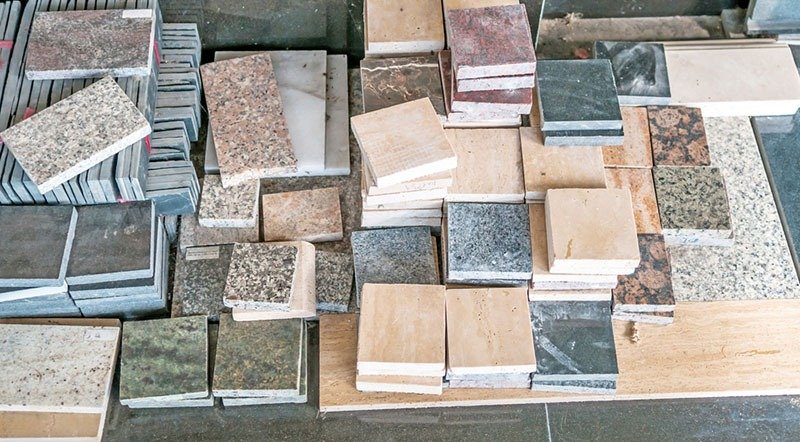
Honed
Honed finishes still involve grinding and sanding, but not to the point of a glossy finish. Unlike polished finishes, they’re not reflective. Rather, honed finishes are a satin smooth surface that reflects very little light. Honed finishes have been popular throughout Europe for some time. But we’re really just now beginning to see this style of finish more here in the U.S. Honing creates a more “natural” look that appeals to those who prefer an aged patina or a look that’s less formal than a polished finish. Honed surfaces are best for high-traffic areas such as flooring, interior wall covering, exterior finishes, fireplace surrounds.
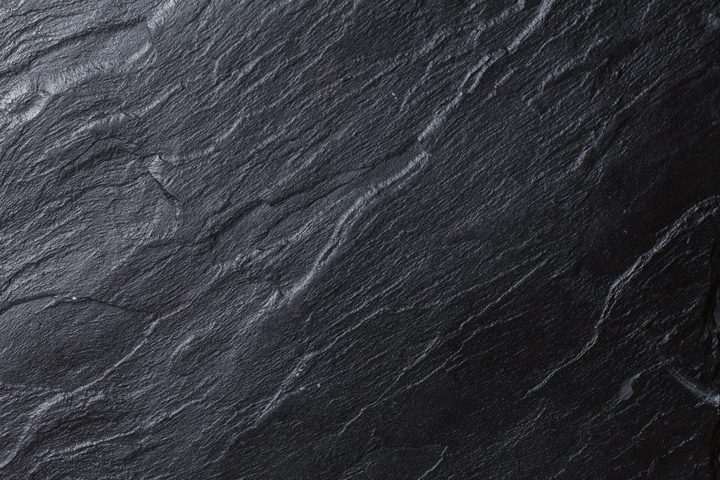
Textured
There are several types of finishes that offer texture. In general, a textured finish is one that’s rough or uneven. One definite “pro” of choosing textured stone is to create slip resistance. It’s also a great way to add distinctive personality to a project. Here are but a few of the most common types of textured finishes:
Brushed: This finish is obtained by brushing the stone with a coarse rotary-type wire brush.
Antique: Antique finish replicates rusticated or distressed textures. Produced through chemical or mechanical means to simulate naturally occurring effects of the aging process.
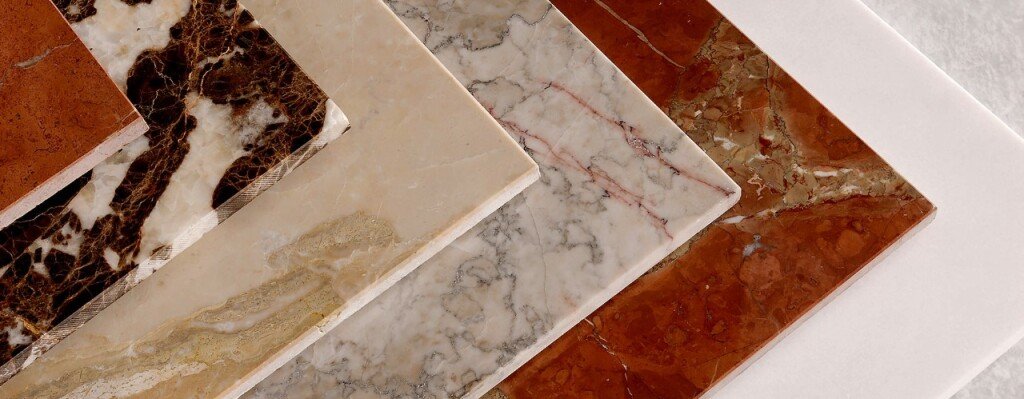
Flamed: The stone is subjected to the high temperatures of a flame or torch, burning off most of the carbon content. What’s left behind is textured quartzite with very gentle colorations. Flamed finishes are popular for outdoor use where slip resistance is an issue.
Chiselled: Looking somewhat like the texture of linen, chiselling creates fine grooves positioned closely together and parallel to the edges.
Bush Hammered: To achieve this industrial-styled look, a hydraulic bush is hammered into the surface of the stone. It creates a large number of close and small indents. The result is an evenly textured surface that’s ideal for non-slip characteristics in high-traffic applications.
Tumbled: Commonly used for natural stone tiles, tumbling involves placing stones in a solution of sand, water, and mild acid, which creates an “old world” look that’s weathered and warm.

Here are some Stunning Wall Cladding Ideas with Marble
layered effect
Place the cut marble in various horizontal layers to add an element of ambiguity. The pieces can be rectangular or irregular in shape. By placing some of the marble pieces in a protruded fashion, a three-dimensional effect can be achieved to the wall. The effect adds an element of depth and provides a contemporary yet cosy feel.
Progressive vein-matching
This requires bigger slabs to be carefully selected in a continuous sequential pattern for the entire designated area where wall cladding is planned. The purpose is to fit and match the veins of the marble. The patterns formed by the matching veins are visually arresting. The myriad of natural patterns that flow with the marble offer a poetic character to the walls.
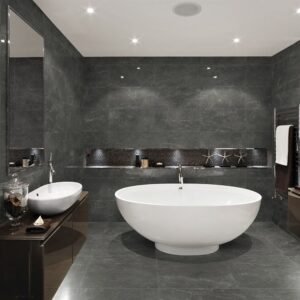
Random layout
This is just the opposite of progressive vein-matching where there is no sequential pattern formation. Stick the slabs randomly and watch each piece of marble seek an individual character. You can choose between veins that are stark or subtle. If you want the character of each slab to be pronounced; go for marble types that have dark streaks. On the other hand, if you like something subtle, go for marble types with lighter veins.

Exterior Wall Cladding
Exterior wall cladding with marble can give the house an instant style update. If the marble selected is darker in shade, the dust of the exterior does not upset the look of the exterior walls. The marble laid on the exterior walls protects the structure of the building apart from providing a handsome finish.
Cost for Indian Vs Italian Marble
Marble from Italy is among the finest in the world and is accordingly priced—with the cheapest varieties starting from Rs 200 per square foot, and the more exclusive, fine stones costing even Rs 4000 for a square foot. Creamy Calacatta marble with its feathery veins and Carrara are classified as Group A. These are available only at the lower depths of quarries. They are highly priced as they have very few fissures running through the stone. Indian marble is much more cost-effective, with the lower-end prices starting at Rs 150 per square foot.

When calculating the costs, you will also need to factor in the prices of cutting the slabs to size and laying it in your required pattern. This will come to around 150 per square foot inclusive of the fixing material. Marble inlay work requires very specialized craftsmen to do the work. Depending on how intricate the design is, costs can go up to Rs 2,500 per square foot. Finally, the marble needs to be polished with fine stones of carborundum and buffed and sealed with tin oxide. This polishing costs approximately Rs 40 per square foot.
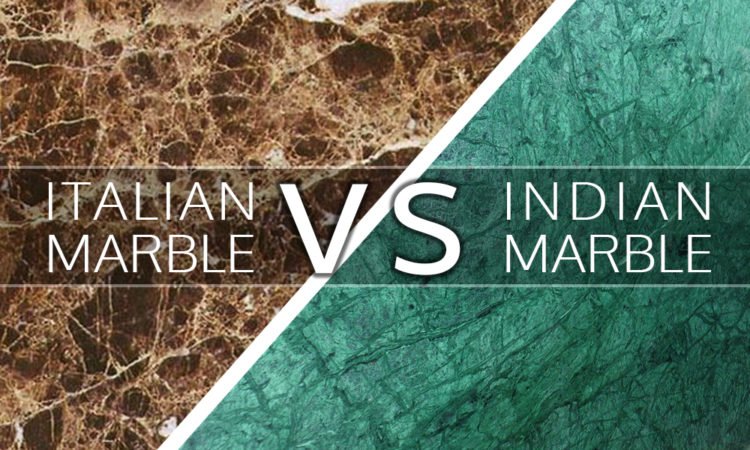
ADDED BY EXPERT TEAM OF BHANDARI MARBLE GROUP…9784593721
